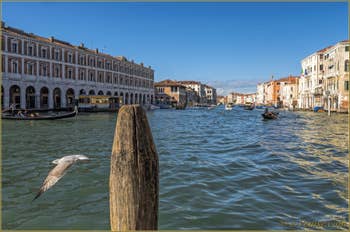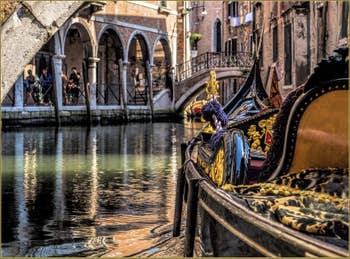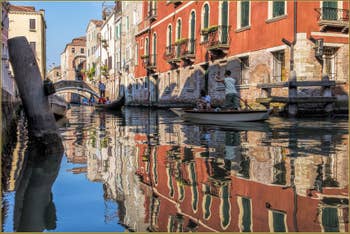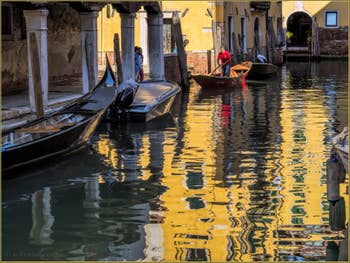The Canals and Rii of Venice

The Fabbriche Nove and Pescaria of the Rialto This, of course, is the charm and beauty of Venice. Water, the mirror of our souls but also of the palaces, water that beautifies, water the source of life.
The multicoloured, often golden, reflections of Venice's canals undoubtedly add a unique visual dimension to the city.
But beyond this romantic and artistic aspect of the canals of Venice, there is a historical dimension that is also very much of the moment.

Golden Gondola on the Rio Widman The entire city is built on water, on millions of tree trunks that have been planted vertically in the lagoon floor for over a thousand years in some cases.
And all the architecture of the city, its houses and palaces, stems intimately from this successful taming of the waves.
Water, yes, not just water. This apparently beautiful water, which reflects the softened image of the façades, also knows how to be threatening, invading Calli and campi during the many Acqua Alta that the Venetians have to endure.

Gondole and Sandolo on the Rio de San Felice The sea water that surrounds them has also protected the city of Venice from potential invaders for centuries. Sailing in the lagoon was particularly risky for those who didn't know the compulsory passages to avoid getting stuck in the sand.
Thanks to this natural protection, Venice never needed to adorn itself with high, massive ramparts like most European cities of the same period. And its palaces could afford to be light and beautiful; they didn't need battlements and watchtowers to protect their occupants.

Sandolo on the Rio Priuli It is also this omnipresent water that has given Venice one of its most beautiful symbols: the gondola, "taxi car" used by Venetians for centuries before the arrival of the vaporetti.
Last but not least, there's a whole culinary tradition with and around seafood.
As you can see, water is omnipresent but it is also vital to Venice and the Venetians. This water is Venice itself, often described as fishy because of the shape of the city.
Back to Top of Page

